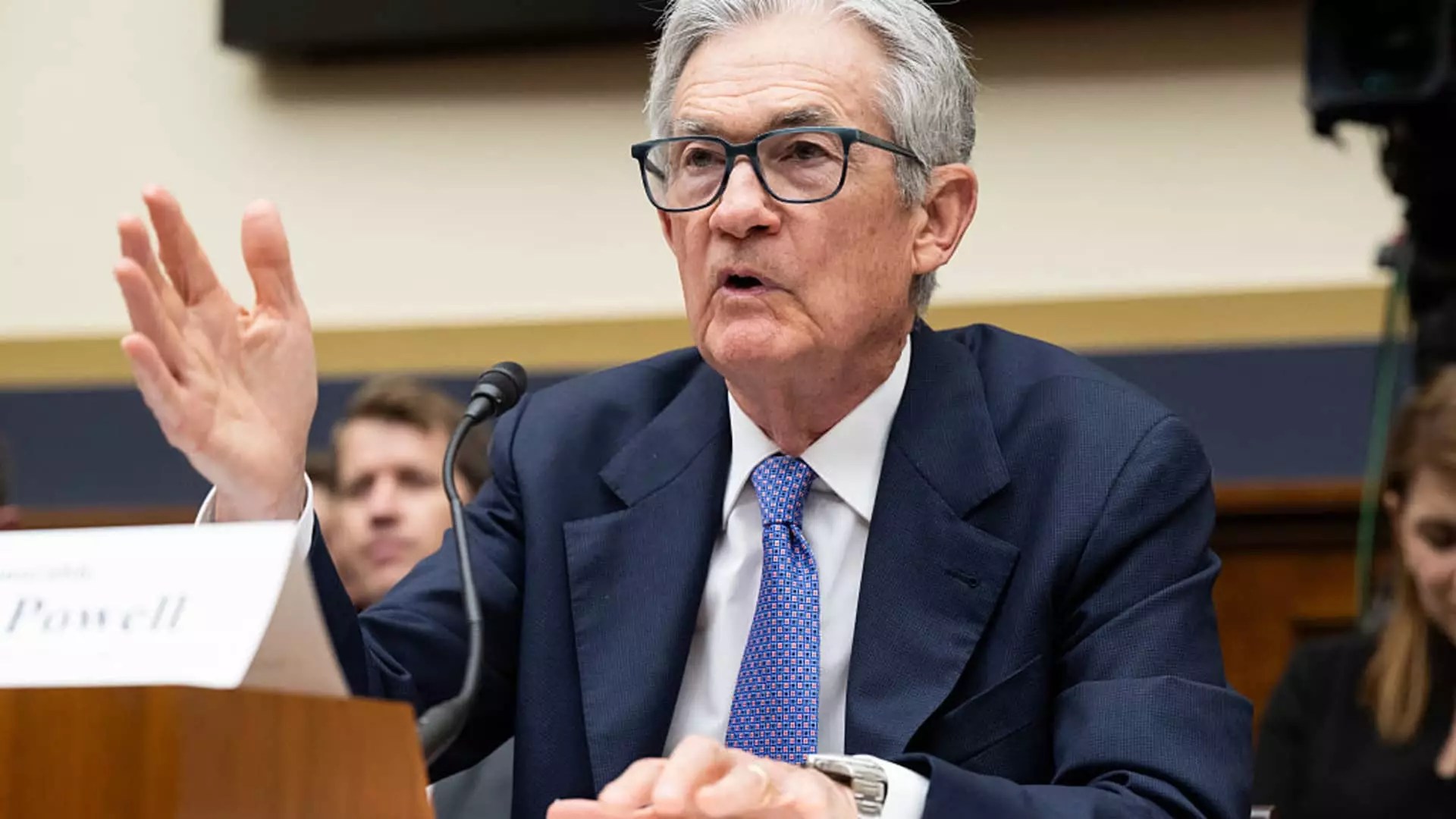Jerome Powell, the Federal Reserve Chair, recently reiterated the central bank’s commitment to maintaining inflation at bay while navigating the choppy waters of economic tariffs. In a politically charged atmosphere, he expressed a belief in the strength of the U.S. economy, particularly the labor market, which he described as approaching full employment. Yet, this cautiously optimistic outlook contrasts sharply with persistent inflation rates that linger above the Fed’s desired 2% threshold. It raises questions about whether the Fed’s approach reflects sound monetary policy or a sense of complacency amid rising economic pressures.
Powell’s comments highlight a balancing act that policymakers have to engage in—keeping inflation under control while ensuring that employment rates remain robust. However, the specter of tariffs imposed under the Trump administration looms large, complicating this calculus. This tension leads one to ponder whether the Fed is adequately responding to evolving economic conditions, or if it is merely waiting for clearer data that may never come, thus risking the economic stability of the nation.
The Political Implications
It’s hard to overlook the political backdrop against which Powell operates. The relationship between the Fed and the current Trump administration seems to be fraying, with the President himself delivering sharp critiques of Powell via social media. Trump’s description of Powell as “dumb” and “hardheaded” is emblematic of a broader frustration with the Federal Reserve’s perceived delay in adjusting monetary policy. It raises unsettling questions about the independence of the Fed. Are policymakers genuinely insulated from political pressure, or is the reality more nuanced? Powell vehemently maintains that the Fed operates free of political influence, yet an atmosphere punctuated by public attack begs skepticism.
By engaging in the kind of bland, boilerplate dialogue during presentations to Congress, Powell risks alienating lawmakers who expect actionable insights rather than cautious rehashes of economic fundamentals. The urgency to adapt to fluctuating economic circumstances necessitates a more forthright approach; standing still could validate the criticisms directed at the Fed by public figures like Trump.
Data Dependency: A Double-Edged Sword
Powell’s insistence on waiting for additional data before making policy adjustments might be interpreted as prudent caution, but it also raises concerns about the Fed’s responsiveness. The central bank’s understanding that waiting for more evidence on tariff impacts can mitigate detrimental inflationary pressures is rational but fraught with potential pitfalls. As pointed out, historical evidence shows that while tariffs can instigate immediate price shocks, their contribution to sustained inflation is often overblown.
This daring bet on data and a cautious approach has a downside: it risks creating a lag in necessary responses, perhaps leading to an economic environment functionally stunted by indecision. The economic situation should ideally be dynamic; a rigid adherence to data points could be detrimental if they fail to capture the real-time complexities of the modern economy, especially in an era marked by rapid changes in global trade dynamics.
The Inflation Dilemma
While Powell acknowledges the Fed’s preferred inflation measure is projected to edge up, the question remains: have we truly grasped the sources and ramifications of this inflation? With projections stating that inflation may reach 2.3% soon, much of the conversation seems mired in uncertainty. Though the central bank’s focus on keeping long-term inflation expectations anchored is commendable, it begs the question of how much longer can we afford to exhibit patience without letting inflation spiral out of control?
The nuances of inflation are not simply academic; they resonate deeply in everyday lives. Rising prices encroach upon consumer purchasing power, and relentless inflation erodes the very fabric of economic stability. The pressure to act decisively increases as households contend with the implications of policy indecision. Powell’s current stance could very well be perceived less as a safeguard against rapid inflation and more as a reluctant acknowledgment of a reality that demands urgent attention.
The Divide Among Rate-Setting Officials
The internal divisions among Federal Open Market Committee (FOMC) members call for scrutiny. The disclosure that nine out of 19 officials lean toward little to no cuts in interest rates highlights a notable rift in perspectives regarding monetary policy. While a unanimous decision is comforting on the surface, the emergent split indicates a lack of consensus on how best to navigate the economic challenges ahead.
Investors and policymakers alike are left scrambling to interpret the implications of these views. Such inconsistency does little to bolster confidence in the Fed’s direction, casting the organization as hesitant even as critical economic indicators continue to unfold.
In a world where economic forecasts are pivotal, the Fed’s current stance must navigate both the tempest of external pressures and internal debates. Ultimately, the Fed’s decisions will reverberate through the economy, impacting individuals’ lives far beyond the walls of Washington DC.

